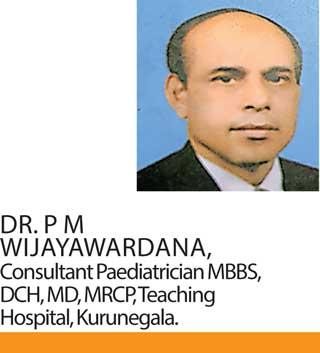Reply To:
Name - Reply Comment

 Giving birth to a baby with special needs, can be extremely challenging, but never difficult due to the wide expansion of supportive care and easily accessible health care facilities, available as we talk now. Down syndrome or Trisomy 21 being the most frequently occurring chromosomal disorder and one of the most leading causes of intellectual disability occurs as a result of a genetic disorder caused by the abnormal cell division of fetus, resulting in an extra genetic material from chromosome 21.British physician, John Langdon Down first described the characteristic features of the condition in 1866 thus the condition was named after him-as Down Syndrome.
Giving birth to a baby with special needs, can be extremely challenging, but never difficult due to the wide expansion of supportive care and easily accessible health care facilities, available as we talk now. Down syndrome or Trisomy 21 being the most frequently occurring chromosomal disorder and one of the most leading causes of intellectual disability occurs as a result of a genetic disorder caused by the abnormal cell division of fetus, resulting in an extra genetic material from chromosome 21.British physician, John Langdon Down first described the characteristic features of the condition in 1866 thus the condition was named after him-as Down Syndrome.
“Down Syndrome day which falls on March 21 is a global awareness day which has been observed by United Nations since 2021, with a motive of raising public awareness and creating a single global voice advocating for the rights, inclusion and well being of people with Down syndrome. The theme of 2021 is to focus on improving connections to ensure that all people with Down syndrome can CONNECT and participate on an equal basis with others. So in today’s Health Capsule we thought of shedding light on the status of this condition in Sri Lanka and how health care facilities have enabled this special community to carry out a life with a satisfactory quality of life.
According to WHO, this genetic disorder has an estimated global incidence of 1 in 1,000-1 in 1,100 live births, which is quite significant” says Dr P M Wijayawardana, Consultant Paediatrician
MBBS, DCH, MD, MRCP, Teaching Hospital, Kurunegala.
A genetic abnormality
During reproduction, both parents pass genes to their babies through chromosomes, so when the cells of the baby develop, each cell receives 23 pairs of chromosomes from each parent with 46 chromosomes in total.
In Down syndrome, one of these chromosomes doesn’t separate in the normal way where the baby would endup with three copies or an extra partial copy of chromosome 21, giving rise to a range of physical and intellectual disabilities.
“The chance of having a Down syndrome baby increases with the mother’s age. In fact, the incidence of having an affected baby during the age 25 is 1:1400, where it increases up to 1:46, by the age 45. It also occurs as a result of genetic imbalance due to defects in cell division, described above” explains Dr Wijayawardana.
Presentation at birth is quite evident
Down Syndrome babies can easily be identified by their physical appearance which can be quite evident at birth. Flat occiput, small chin, slanted eyes, poor muscle tone, flat nasal bridge, single palmar crease, wide protruding tongue, small mouth, short neck, excessive joint flexibility, extra space between big toe and second toe, abnormal finger tip patterns and short fingers are among the commonest. Additionally, about 20% of the people have atlanto-axial instability giving rise to spinal cord injuries where hip dislocations in the absence of any trauma is seen in 33% of the affected individuals.
Screening and diagnosis
Quadruple test and Nuchal translucency scan can be carried out inorder to identify Down Syndrome; before birth.
“Here, a sample of maternal blood is taken at around 15-16 weeks of pregnancy and blood levels
Including, alpha-fetoprotein (AFP), total human chorionic gonadotrophin (hCG), unconjugated oestriol (uE3) and inhibin-A (inhibin) are measured. Positive levels along with an Ultra sound scan done during the first week of pregnancy which detects nuchal translucency of the fetus would confirm a Downs baby growing inside you. But, as abortions are illegal in the Sri Lankan set-up, the pregnancy will have to be continued whether you like it or not, anticipating the extra care, to be taken in days to come”.
Complications vary
Short stature, delayed puberty and hypothyroidism are common among individuals with Down Syndrome and epileptic seizures, infantile spasms Alzheimers disease, visual defects like Strabismus and cataract and hearing defects like Otitis media and chronic ear infections can also be observed.
Congenital heart diseases including Atrioventricular septal defect and ventricular septal defect can be seen in around 40% of the affected individuals.
Leukaemia is 10-15 times commoner in Down Syndrome children where Acute Lymphoblastic Leukaemia accounts for the majority.
The average IQ of a young adult with Down syndrome is 50, which is equivalent to the mental ability of a 8-9 year old child.
“Raising a baby with Down Syndrome can be quite challenging as a result of the range of complications they can end up with, as the growth continues. However, these children can be full of talents and we have seen many individuals with the condition who are successfully facing the life as it is, reaching goals, like any other normal person. So, the take home message is to let them be a part of the normal society and behave like normal individuals so it is the responsibility of all of us to make the world a better place for them to live,” concludes Dr Wijayawardana.